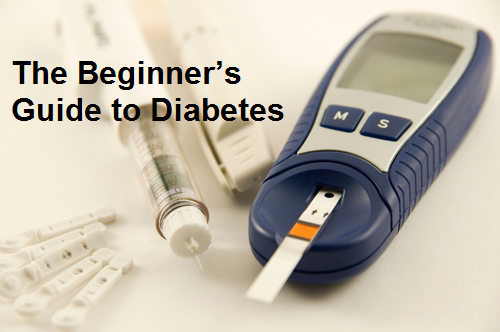
According to the American Diabetes Association, 25.8 million suffer from diabetes. That equates to nearly 9% of the U.S population. Diabetes remains a major health concern for the world. In 2010, 1.9 million people over the age of 20 were diagnosed with diabetes within the United States.
Are you at risk for diabetes? Diabetes can affect anyone regardless of weight, race, or income.

What is Diabetes?
Diabetes is a disease that is brought about through the metabolic process within the body. It occurs when our body is not able to make insulin, or not able to make enough insulin to regulate the levels of glucose within our blood stream. This leads to high blood sugar (glucose) levels, and eventually to cardiac disease.
There are many forms of diabetes, as a disease. The three forms that are most significant are Type 1 diabetes, Type 2 diabetes and Gestational diabetes.
=> Type 1 Diabetes is an auto-immune reaction that the body experiences. The exact reason for this event is not fully understood at this time. What happens is that the body's defense system (immune system) attacks and destroys the cells that are responsible for the formation of insulin. Without those cells, blood sugar levels increase and the body is not able to regulate glucose levels within the blood.
=> Type 2 Diabetes is one of the highest diagnosed forms of diabetes. This type of diabetes occurs when the body becomes insulin deficient or resistant. It is often associated with dietary problems and is found in people from all walks of life, though obese people tend to be more at risk.
=> Gestational Diabetes occurs when the female body undergoes high blood sugar levels during pregnancy. It is fairly common in pregnant women with an appearance ratio of 1:25 women/pregnancy. Gestational diabetes disappears after pregnancy ends, though 50% of women who experience gestational Diabetes become type 2 diabetics as they age.
What Causes Diabetes?
Diabetes is caused by genetics. Type 1 diabetes is the result of gene interaction, and many outside factors that science has not yet isolated. You can ask your doctor to test you for the diabetic gene.
Type 2 diabetes is related to genetics as well, but dietary (lifestyle) choices also play a role in the development of this disease. Diet is not the only outside factor. Your heritage, ethnicity and family history can all play a role in whether or not you develop diabetes. Obesity is not a deciding factor, though diabetes does affect obese people. Type 2 diabetes can affect people of any weight and any ethnicity.
What are the Symptoms of Diabetes?
The symptoms of diabetes vary from one person to the next, and in the degree of magnitude between type 1 diabetes and type 2 diabetes. Physically, you may find that you urinate more often, and as often as once per hour.
You might also experience an extreme thirst. In most people, hunger and thirst feel the same so you may interpret that feeling as being constantly hungry.
Problems with eyesight are another symptom. Blurry vision is often associated with diabetes.
Are you tired all of the time? Chronic fatigue is another symptom. Losing weight even though you seem to be eating more is also a symptom. Physically, you might notice that your hands and feet are more sensitive. People may experience numbness, pain in their hands or feet, or may even feel like they are falling asleep. Slow healing of cuts and the slow dissipation of bruises are both signs of diabetes.
What Treatment Options are Available for Diabetes Relief?
The first step in treatment is diagnosis. Sadly, there is no known cure for diabetes, yet being diagnosed early helps to manage symptoms more effectively.
Type 1 diabetes requires the use of insulin for the remainder of one's life. Exercise and weight control can also help to decrease the symptoms of type 1 diabetes. Monitoring blood glucose levels is part of the daily treatment for type 1 diabetes. Dietary restrictions help to control blood sugar levels and to slow the progression of symptoms.
Type 2 diabetes also requires diagnosis. Type 2 diabetics monitor blood sugar daily. They also should adapt to a healthy diet and a lifestyle that involves regular exercise. In more advanced cases, oral medication or insulin may be prescribed. The goal is to prevent or slow the progression of the disease.
The Prevention of Diabetes
The two activities that can help to prevent diabetes are changes in lifestyle, that include adhering to a healthy diet and routine regular exercise with a focus on healthy weight goals. There is no prevention of Type 1 diabetes, though there are good indications that a healthy diet, regular exercise and a healthy weight can push the onset of type 2 diabetes back until late in life.
